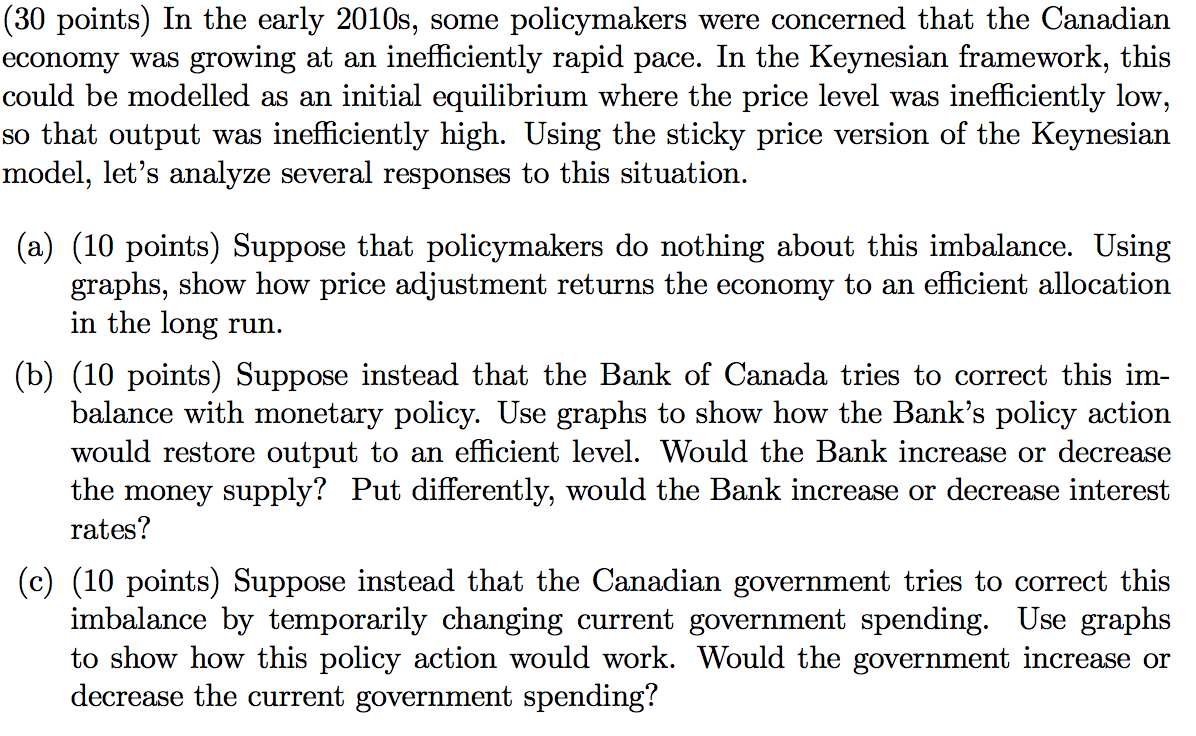
(30 points) In the early 2010s, some policymakers were concerned that the Canadian economy was growing at an inefficiently rapid pace. In the Keynesian framework, this could be modelled as an initial equilibrium where the price level was inefficiently low, so that output was inefficiently high. Using the sticky price version of the Keynesian model, let's analyze several responses to this situation. (a) (10 points) Suppose that policymakers do nothing about this imbalance. Using graphs, show how price adjustment returns the economy to an efficient allocation in the long run. (b) (10 points) Suppose instead that the Bank of Canada tries to correct this im- balance with monetary policy. Use graphs to show how the Bank's policy action would restore output to an efficient level. Would the Bank increase or decrease the money supply? Put differently, would the Bank increase or decrease interest rates? (c) (10 points) Suppose instead that the Canadian government tries to correct this imbalance by temporarily changing current government spending. Use graphs to show how this policy action would work. Would the government increase or decrease the current government spending? (30 points) In the early 2010s, some policymakers were concerned that the Canadian economy was growing at an inefficiently rapid pace. In the Keynesian framework, this could be modelled as an initial equilibrium where the price level was inefficiently low, so that output was inefficiently high. Using the sticky price version of the Keynesian model, let's analyze several responses to this situation. (a) (10 points) Suppose that policymakers do nothing about this imbalance. Using graphs, show how price adjustment returns the economy to an efficient allocation in the long run. (b) (10 points) Suppose instead that the Bank of Canada tries to correct this im- balance with monetary policy. Use graphs to show how the Bank's policy action would restore output to an efficient level. Would the Bank increase or decrease the money supply? Put differently, would the Bank increase or decrease interest rates? (c) (10 points) Suppose instead that the Canadian government tries to correct this imbalance by temporarily changing current government spending. Use graphs to show how this policy action would work. Would the government increase or decrease the current government spending







